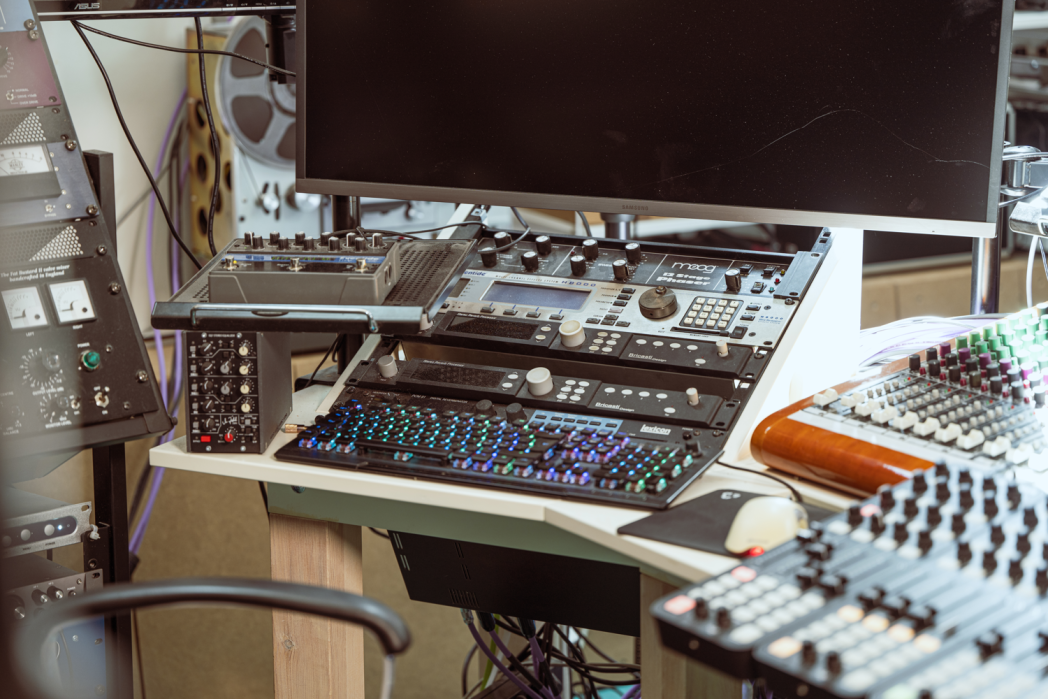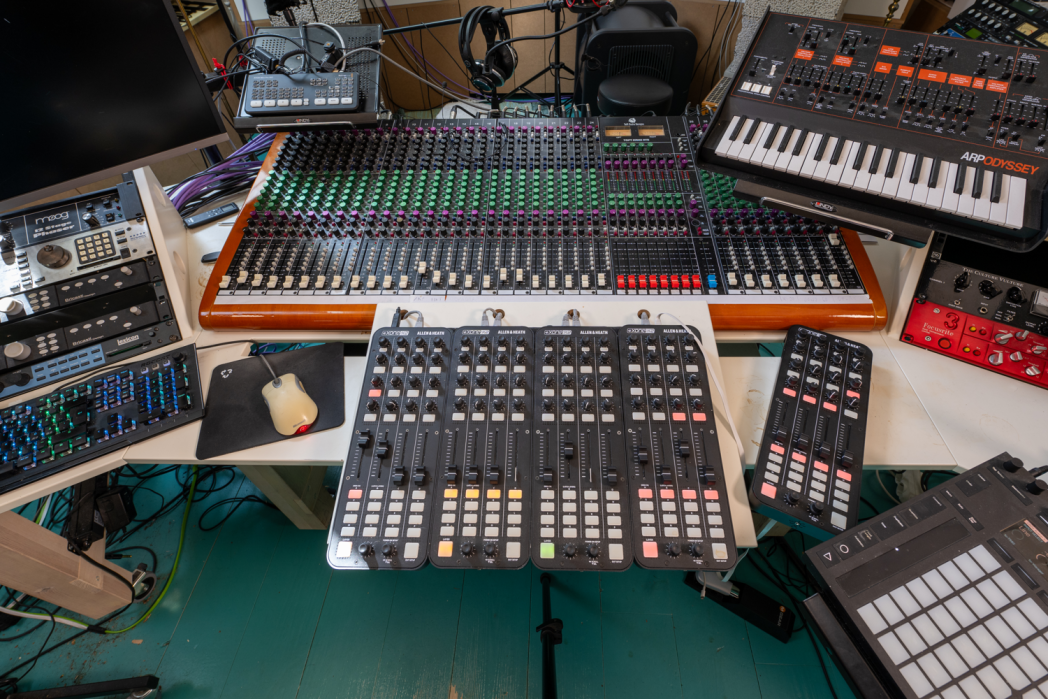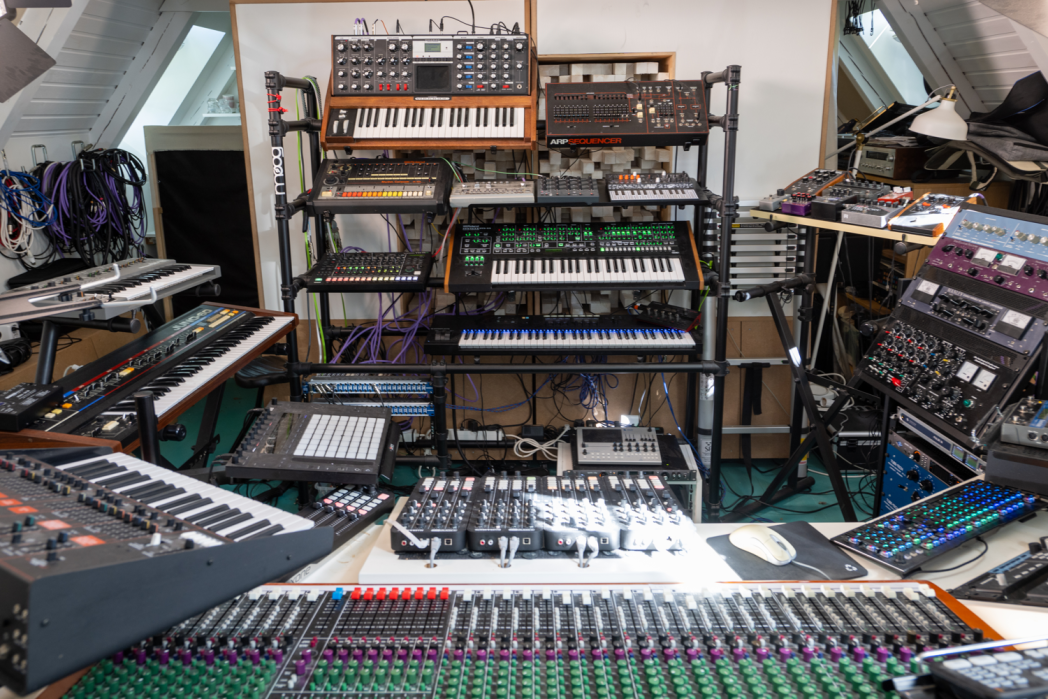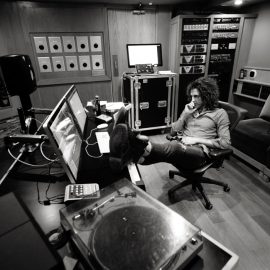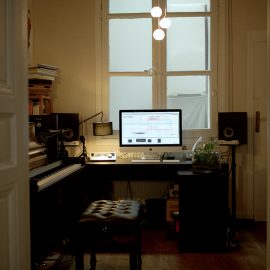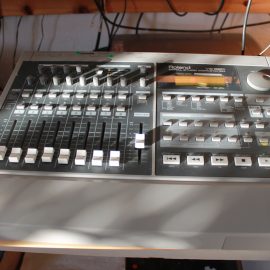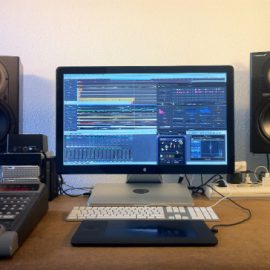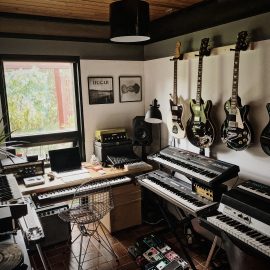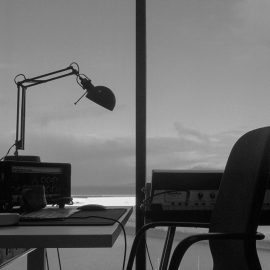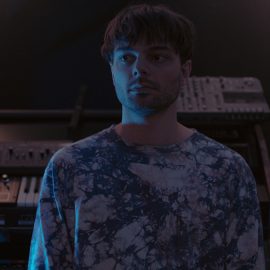Can you tell us how you got involved in composing, and what was your very first piece of gear?
I began playing the electric organ when I was seven years old, then took up the violin at age nine and the piano at age eleven. I played in orchestras and ensembles almost every day of the week. During my mid-teens, I joined a pop band, and when I was 19, I began my first serious attempts at creating electronic music. So, the first piece of gear was the Yamaha electric organ.
How many different studio iterations have you gone through, and what does your final setup look like right now?
Oh, that’s too many for me to recall. My current studio setup is a combination of outboard gear and a computer where I run Ableton. It’s set up so I can work in the 4-step workflow that I have created. Essentially, it involves parts of playing and recording, followed by recording live takes, which is how I create my songs. This final step is also how I play live, so my studio setup has a very similar logic to my live setup. My studio has quite a lot more gear, which I mainly use in the first step… The playground.
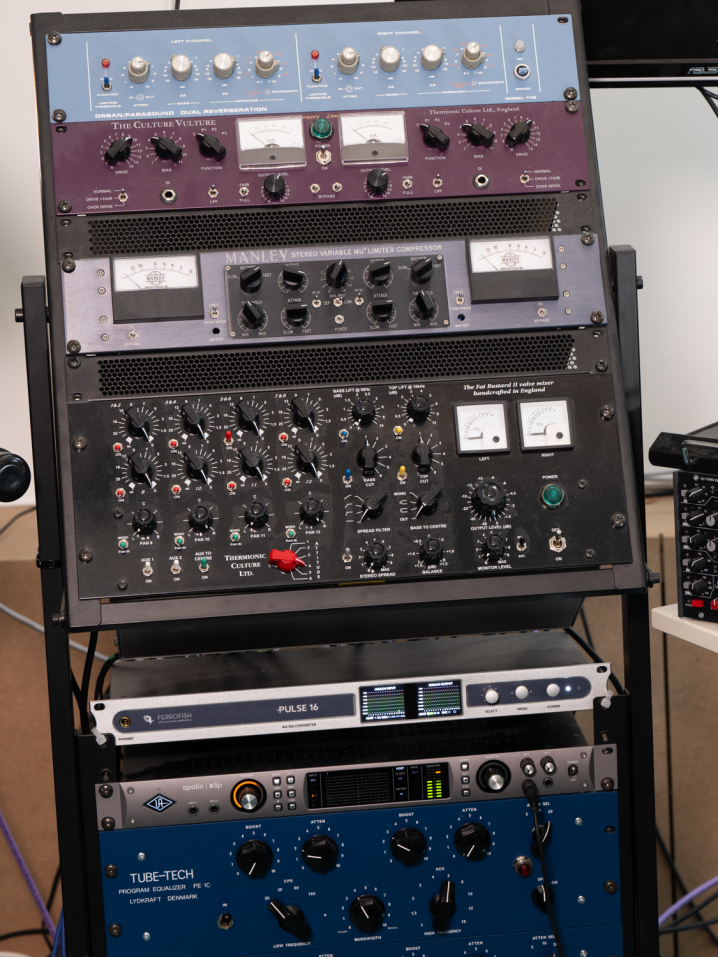
Tell us about your favourite piece of hardware.
I don’t really have a favorite, as there are so many wonderful things to explore, and I don’t think choosing a favorite helps one’s creativity to spark. But I can tell you about a piece that I love: the Thermionic Culture Fat Bastard. It is a 12-channel summing mixer that is full of tubes, attitude, color, and beauty. All of my sounds and final mixes are played through it, and it gives so much sonic life.
And what about the software that you use for production?
I love using Ableton and work with it both in the studio and on stage. When it comes to plug-ins, I mainly use UAD, and then a little bit of Arturia and Native Instruments. As for software synths, I use Roland Cloud, Spectrasonics, UAD, Arturia, and Native Instruments.
Is there a particular piece of gear that you’re just dying to get your hands on, and do you think one day you’ll have it?
The Moog One and the Echo Fix Tape echo (I sold my original a few years ago and miss it a lot)
Can you please share some aspects of sound design in your work?
The first step in my process involves a combination of recording, improvising, and sound design. I simply start recording and let my creativity guide me. This is a highly enjoyable process for me and also has a meditative effect. I maintain a very open and accepting attitude, welcoming all sounds, ideas, and even mistakes. I record all the sounds, feelings, and explore them thoroughly. Oftentimes, I record a sound and then create loops of certain parts of it while applying effects and using outboard gear. These short loops transform into long, organic movements and soundscapes that are full of life.

Any particular new techniques that you tried out for your new album?
I didn’t try any new techniques, but it was a new exploration to allow an acoustic instrumentalist into my workflow of improvisation. Additionally, each relationship is a new adventure. The process of the album had the same steps as my normal process, but with the major difference of Henrik’s presence in some of the steps.
The process looked like this:
Step 0 (together with Henrik) – Walking in the forest, sharing, meditating.
Step 1a (together with Henrik) – Hit record and let Henrik improvise with his viola.
Step 1b (alone) – the sound design step where I’m working with the recorded sounds of Henrik to create new soundscapes, rhythms, and sounds.
Step 2 (alone) – choosing sounds from step 1b. 12 sounds on 12 channels create one sketch without a specific arrangement, potentially being played in almost endless ways. In our collaboration, the sounds in these sketches are almost entirely based on sounds originating from Henrik’s viola, sometimes beyond recognition.
Step 3 (together with Henrik) – We hit record and play the sketch, often multiple times. I arrange the sounds in the sketch, and Henrik improvises with his viola. I also loop Henrik live. The processed sounds from his viola meet the viola again, both sonically and emotionally, creating a dance between different decays of the sounds, almost like a garden where the present flowers bloom within the soil and decay of their precursors.
You can see this step of the song “Hind” on this YouTube video:
This is when the actual song happened. Henrik had never heard me play this sketch, and the theme of the song came to Henrik right there.
Step 4 (together with Henrik) – Curation and choosing takes to include on the album.
What does your live setup look like, and what do you bring with you when you travel for an extensive tour?
My live setup is centered around the sketches that I play, and as I play them from Ableton, you could say that the core of my setup is Ableton. In order to control and play the sketches, loop live, and manipulate effects, I utilize MIDI controllers. I previously used the K2s from Allen & Heath for a long time, but now I use two custom-made MIDI controllers from the fantastic brand Yaeltex. Additionally, I incorporate various hardware synths, effects, and mixers, as well as soft synths on the computer to add live elements to my performances.
What is the most important environmental aspect of your current workspace, and what would be a particular element that you would improve on?
My studio is located next to the incredible national park of Söderåsen in the south of Sweden. Nature plays a significant role in my creative process and is one of my main sources of inspiration. I believe that there is nothing in particular that I need to change, as everything naturally evolves and changes on its own. Embracing and allowing that change is an important aspect of life.
What can you tell us about your overall process of composition? How are the ideas born, where do they mature, and when do they finally see the light?
In the process described above, I strive to welcome improvisation in various forms, creating space for myself and others to express something spontaneous. These energies, in the form of sounds, emotions, and movements, continually guide the way and allow energies to transform into new shapes. To foster creativity, I think it helps to understand how different phenomena appear in the universe; they are born, they live, and they die. Birth is a transformation of energy, as is death. Nothing comes from nothing and disappears into nothing; everything transforms. To allow this flow of transformation (creativity), you need to acknowledge and honor both birth, life, and death.
After the piece is complete, how do you audition the results? What are your reactions to hearing your music in a different context, setting, or a sound system?
In my process, I do minimal post-production, mostly just shortening some parts of the live improvisations if necessary (as they can sometimes be a bit too long). In the fourth step of the process, I listen and try to decide on a very intuitive and emotional level. If I feel drawn to a particular take, it becomes a potential candidate for the record. This approach allows me to curate and choose based on my feelings rather than my thoughts (although thoughts are also a part of this process). I mostly listen in the studio and on headphones.
Do you ever procrastinate? If so, what do you usually find yourself doing during those times?
I would say that procrastination is a significant component of my process. Allowing for improvisation in my process enables me to expand myself and to observe and experience more of who I truly am. This expansion leads to potential connections between different aspects of myself. I permit procrastination in various settings, but I believe that walking in nature is what I do the most.
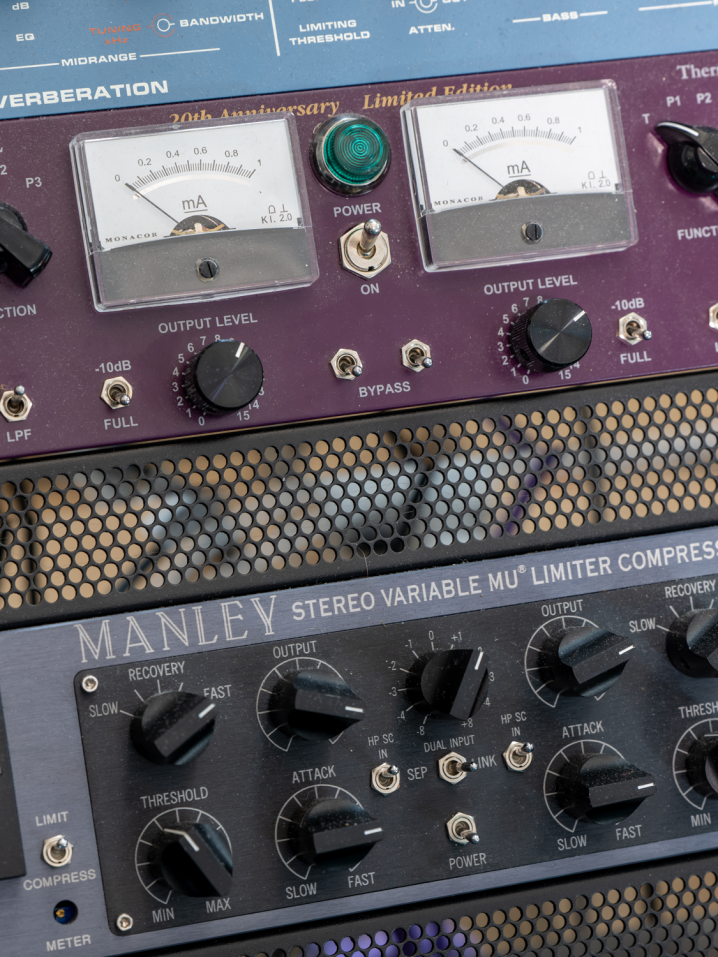
What gets you inspired?
To me, inspiration is actively remembering the life that flows through every moment, including myself. I feel that when I recognize life in the things I encounter, this happens naturally. Inspiration is when life naturally reminds itself of its presence or when presence naturally reminds itself of its existence.
And finally, what are your thoughts on the state of “electronic music” today?
I believe there is a lot of incredible music that is vibrant and full of life, and I am very grateful for it.
